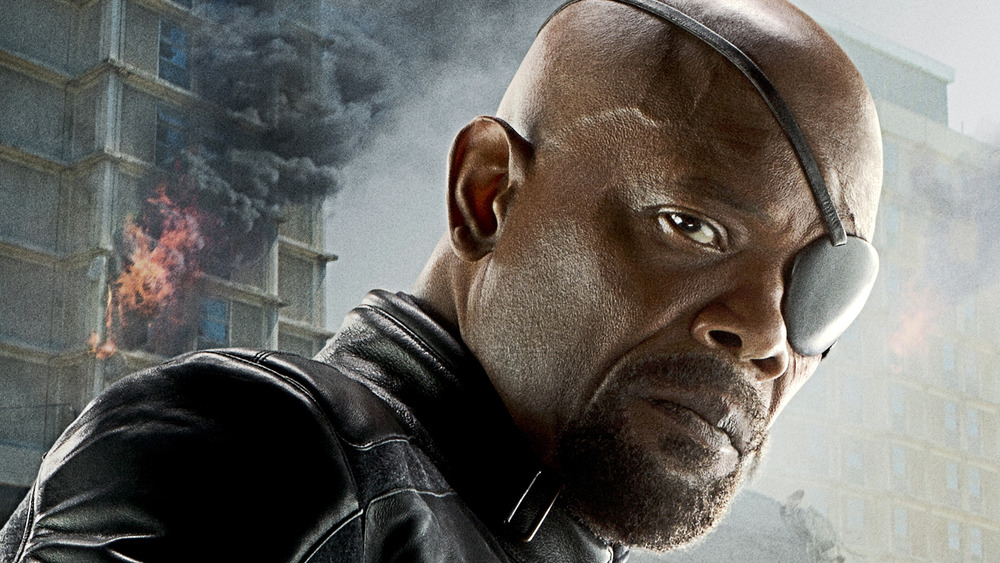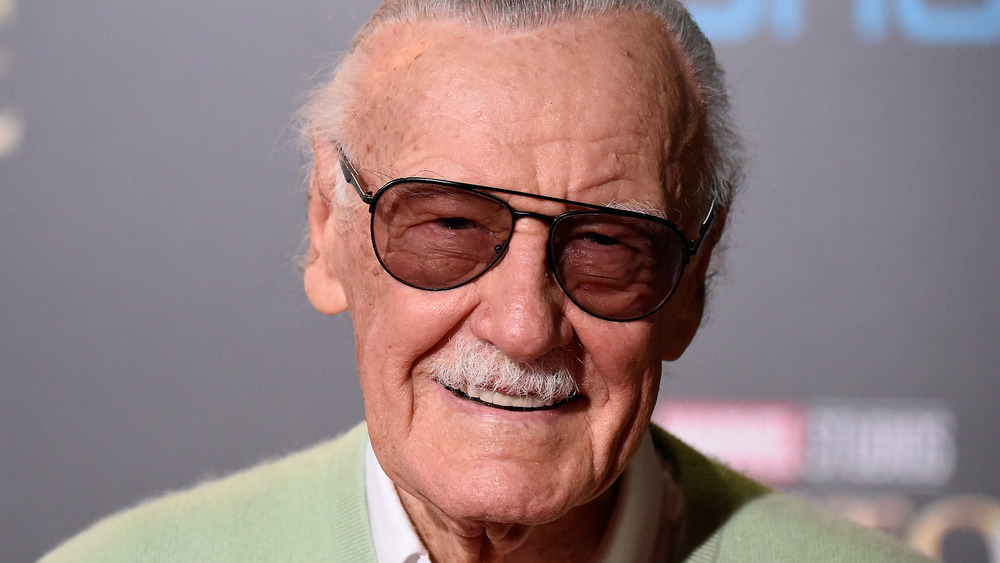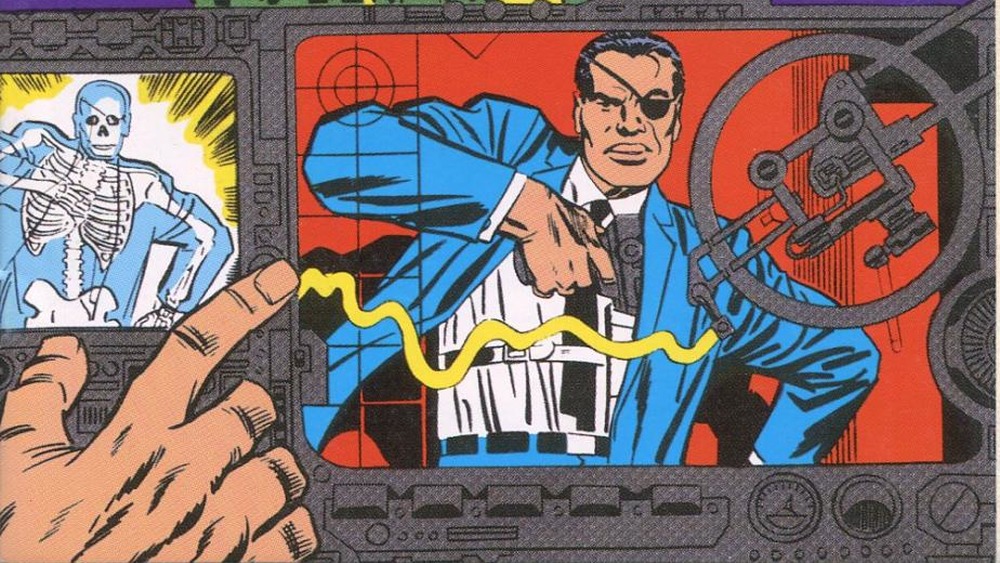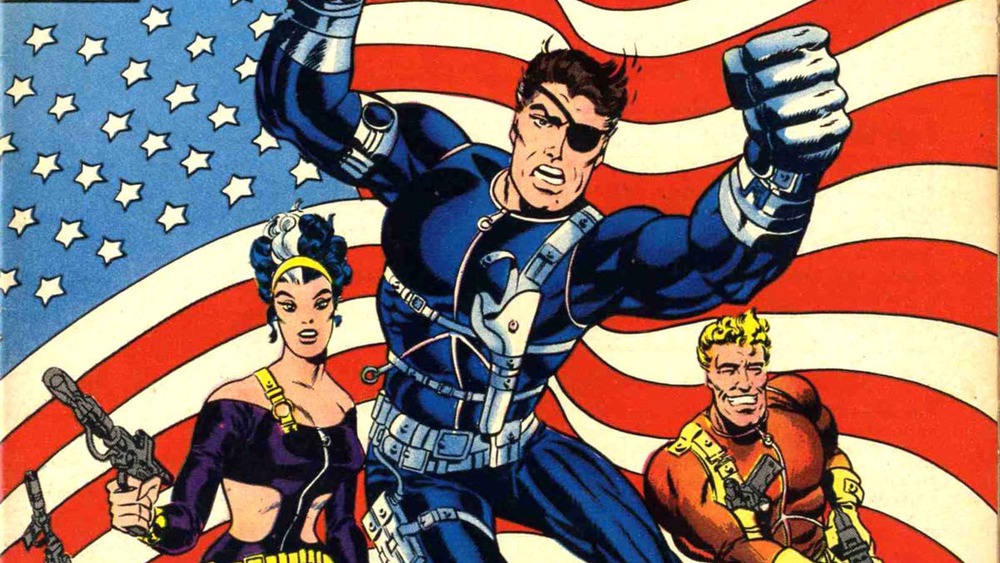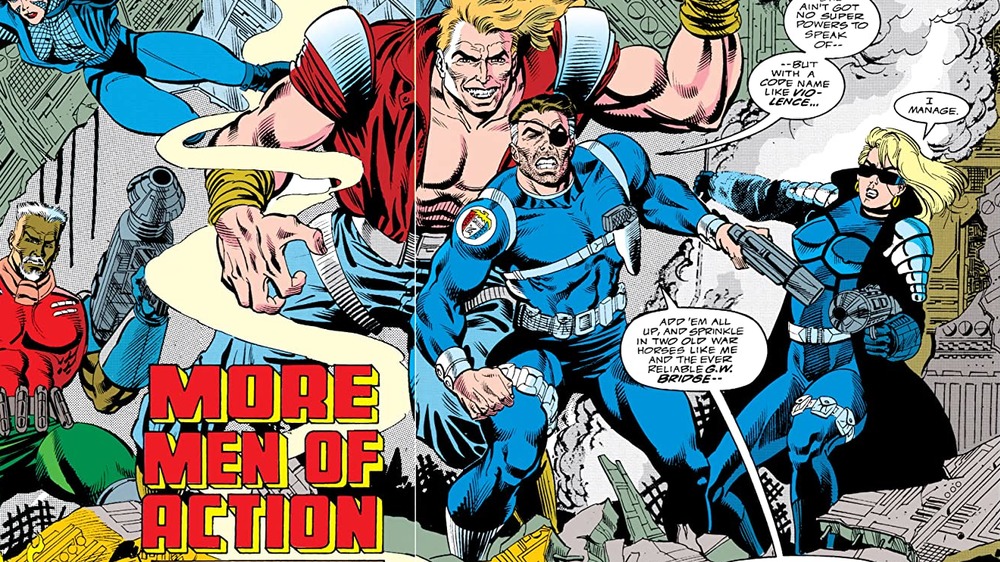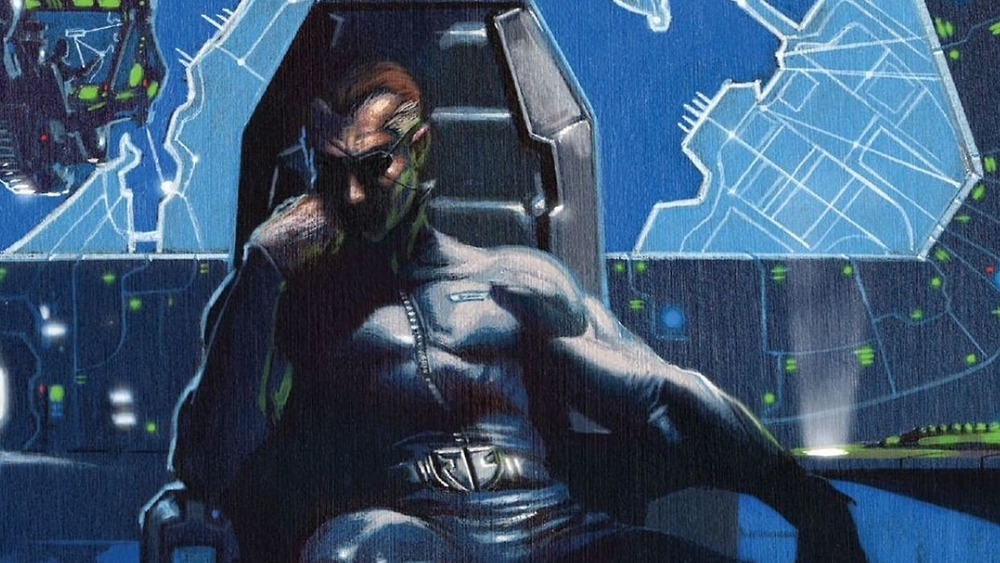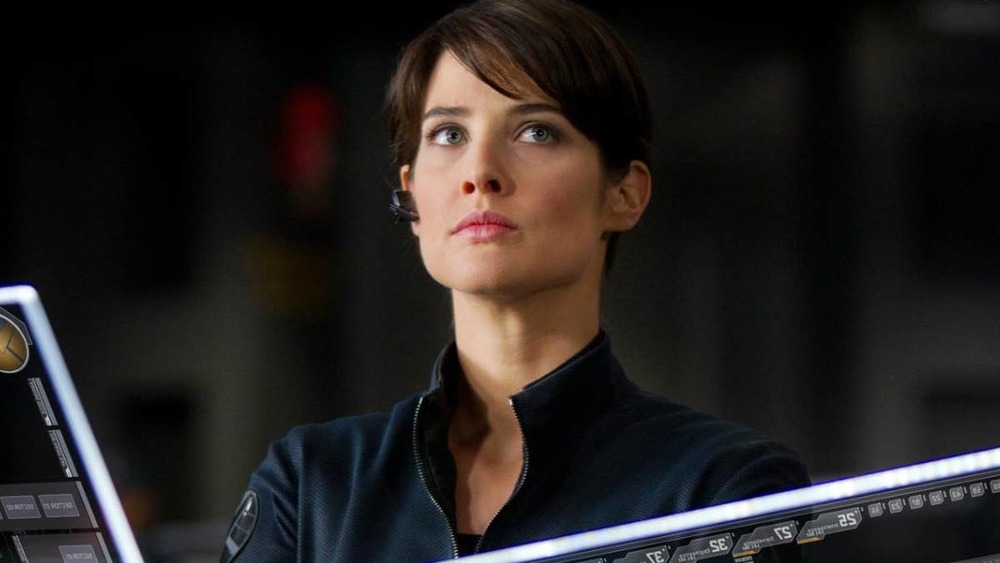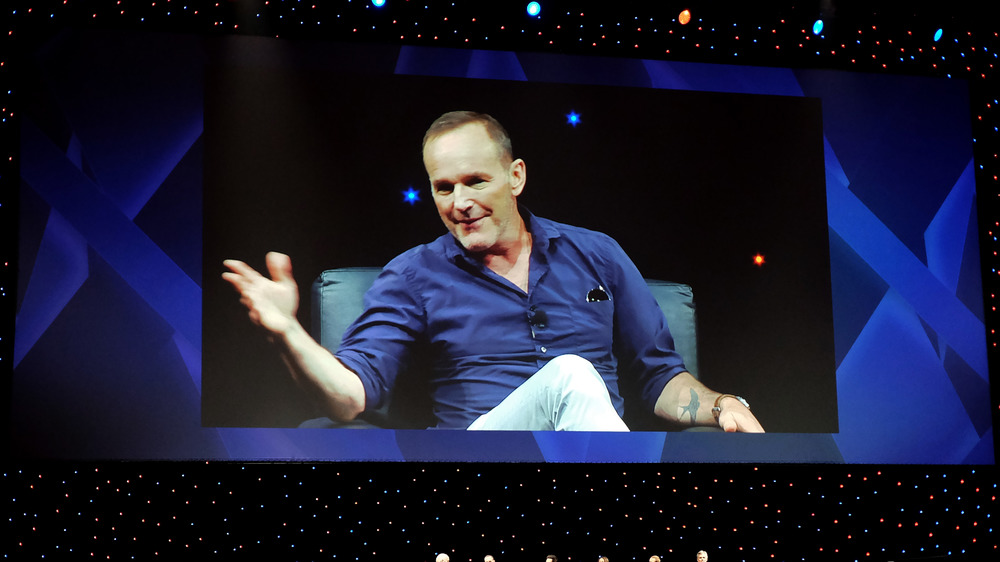The History Of Marvel's S.H.I.E.L.D. Explained
One of the first lessons you learn about comic books is that nothing ever really dies in them. Any villain whose body is not shown is certainly still alive after that devastating explosion. Lower-tier characters who fall out of fashion will later be resurrected by young upstarts hoping to take risks they can't pull off with a marquee name. And those marquee names will be killed in special arcs that will later be retconned out of existence when the business of selling ink and paper stories demands it.
So it goes with S.H.I.E.L.D., the fictional spy agency that comes to the fore whenever things get sufficiently conspiratorial in the pages of Marvel comics. S.H.I.E.L.D. has been cropping up in both the comics and the Marvel Cinematic Universe for over 50 years. This longevity is surprising, given the organization's long periods of dormancy — and the fact that it's a riff mastermind Stan Lee dreamed up while watching TV. With the modern story of the Marvel universe absolutely run through with agents and spies working on behalf of the agency, it's worth taking the time to walk through the confusing (and sometimes contradictory) story of comic book fans' favorite clandestine operators. This is S.H.I.E.L.D., declassified.
The Man From ... S.H.I.E.L.D.?
Stan Lee wasn't coy about his inspirations, and S.H.I.E.L.D. is no exception. In a 2014 interview, Lee openly discussed the role the popular television series The Man From U.N.C.L.E. played in the organization's origins. "I love the whole concept of S.H.I.E.L.D. I don't know if you'd remember, but years ago, there was a television show called The Man from U.N.C.L.E., and U.N.C.L.E. was a secret organization and so forth. I got the idea for S.H.I.E.L.D. from U.N.C.L.E. I thought it'd be great to have an organization like that, but because we were doing comic books, I'd make it bigger and more colorful and more far out."
From its very beginning, Lee detailed, S.H.I.E.L.D. was a means of reviving dormant characters. The commando comics starring Sgt. Nick Fury, for example, had ended without much resolution for fans. In S.H.I.E.L.D., Lee saw a way to give them an update on a beloved character, while indulging his desire to write spy stories.
"So it occurred to me that if I did this group S.H.I.E.L.D.," Lee explained, "why not put Sergeant Fury at the head of it, except he'd now be a Colonel. So he'd be Colonel Fury [with] the agents of S.H.I.E.L.D. — and that's how it all started. I loved the idea, and I'm so glad that it's a TV series. As it moves along, I hope it just gets wilder and wilder."
Off to the races
Long before the modern cinematic era, in which audiences have to watch Peter Parker get bit by a spider every time the rights to his name change hands, there wasn't as much need to make origin stories run deep back when S.H.I.E.L.D. debuted. "This is a spy organization," those Marvel comics of yore seem to say, "and they're going to do entertaining things." That was enough explanation about how S.H.I.E.L.D. came to be for readers of the time.
From 1965's Strange Tales #35, in which S.H.I.E.L.D. makes its entrance, fans were expected to take it in stride that S.H.I.E.L.D. exists and many of Marvel's key figures are involved. This landmark issue also asks that readers accept that Nick Fury wears an eyepatch now, something that has carried over into his modern portrayal by Samuel L. Jackson.
The inaugural issue sees Tony Stark working as a S.H.I.E.L.D. higher-up, as Fury holds meetings with some of the most powerful people on the face of the Earth. Thus did S.H.I.E.L.D. begin.
Quickly lauded
Stan Lee and Jack Kirby were well on their way to being regarded as legends by the time S.H.I.E.L.D. was created. The overlay of a slick spy story on top of Kirby's dynamic and increasingly cosmic art certainly added to that reputation. Lee and Kirby, along with another eventual titan of the comics industry, Jim Steranko, crafted something entirely new in S.H.I.E.L.D.
Where the other titles of the era were frequently melodramatic sci-fi romps and morality plays, these comics — Steranko's run on Nick Fury, Agent of S.H.I.E.L.D. in particular — explore a new style of comic book that takes its cues less from pulp fiction, and more from the cinematic exploits of James Bond. The original run of S.H.I.E.L.D. stories in Strange Tales and Nick Fury were a sea change in comic book pacing, plotting, and style.
It's fair to say people noticed. These titles racked up awards in their early years, and cemented Steranko's place in comic book history.
A long hiatus
In spite of initial success, S.H.I.E.L.D. wasn't long for this world. Stories of the cleverly named spy organization fell out of fashion alongside its fellow travelers in S.P.E.C.T.R.E. and U.N.C.L.E. When Steranko ended his run on Nick Fury, Agent of S.H.I.E.L.D. in the early '70s, nobody wanted to attempt to step into his massive shoes. The idea of picking up a story that was essentially the comic book equivalent of lauded TV series The Prisoner loomed too large.
As such, the most Cold War of all Marvel creations was reduced to nearly nothing for the majority of the Cold War. Superheroes sat out the twilight struggle between the world's superpowers, and S.H.I.E.L.D. fittingly melted into the shadows. Though it is the global glue of stateless superagents in the Marvel universe, it was nowhere to be found in a world where borders were deadly serious. The organization didn't appear again in any sort of marquee way until the late '80s, when it was revived for a mini-series called Nick Fury vs. S.H.I.E.L.D., and then for a new run of Nick Fury, Agent of S.H.I.E.L.D.
S.H.I.E.L.D. comings and goings
As you might expect, the history of a secret organization that messes with the balance of the entire Marvel universe is a little murky. The organization was initially affiliated, however tangentially, with the United States government. This allowed S.H.I.E.L.D. to incorporate Nick Fury, who was a commando in the US military. That take was quickly jettisoned to make S.H.I.E.L.D. a shadow arm of the United Nations. But by far the most common way to portray S.H.I.E.L.D. is as an unaccountable global entity that exists outside the constraints of world governments.
S.H.I.E.L.D. is overseen by a board of world leaders and spies, with its first depicted head being the director of the CIA. After that director is assassinated, the US president personally recommends then-CIA agent Fury take the role. The existence of S.H.I.E.L.D. is so secret that even an upper level agent like Fury had never heard of it before being appointed. Later versions put a board over Fury's head, made up of secretive power players.
S.H.I.E.L.D.'s most critical contribution to Marvel lore is the Life Model Decoy. These android versions of prominent people come in handy when whispers of assassination attempts and other plots rise to a dull roar. This invention comes back to haunt them, however: Life Model Decoys have been used to attack and infiltrate the organization. Still, S.H.I.E.L.D. hums along well — albeit, in the shadows.
A major gaffe
S.H.I.E.L.D. stories started to take center stage in the early 2000s, culminating in one of the worst mistakes in their storied and bloody history. In the 2004 Secret War event, Nick Fury leads a covert war against the fictional nation of Latveria, bringing the secret spy agency into the era of fabricated wars and extrajudicial coups.
Fury enlists the help of several of Marvel's top-line superheroes, including Wolverine and Captain America. To keep his plan under wraps, he wipes their memories after having them depose the leader of Latveria, in direct defiance of US policy and presidential orders. The memories come rushing back in the worst way after a not-quite-dead former Latverian leader shows up in New York City with an explosive payload of payback.
After a massive and destructive fight that leaves Luke Cage in a coma, the players in the Latverian coup confront Nick Fury to ask what they did and why. After a brutal interrogation courtesy of Wolverine, the heroes realize that they're talking to a decoy. The android Fury has been standing in for the now-wanted spymaster, as he's fled and gone to ground. S.H.I.E.L.D.'s standing is irreparably damaged by these revelations.
New management, old origins
Fury's departure leads to the rise of Maria Hill. This new spymaster takes a much more antagonistic stance on the superheroes of the Marvel universe: She leads S.H.I.E.L.D. in a crackdown on superheroes in the infamous Civil War arc. S.H.I.E.L.D. acts as enforcer of the Superhero Registration Act, tracking down those unwilling to comply with the new law. Coupled with the strained legacy left by Fury, Hill's time as director is marked by deep distrust between her organization, the formerly S.H.I.E.L.D.-friendly Avengers, and the government.
In Civil War's wake, Maria Hill steps down from the position of director. She recommends Tony Stark for the job and is ultimately asked to serve as his deputy director. This isn't enormously popular: Stark's leadership is criticized as a sort of unofficial public-private partnership between Stark Industries and S.H.I.E.L.D.
Around the same time, a still-living but deeply underground Nick Fury uncovers files that indicate S.H.I.E.L.D. has been a subsidiary of the fascist organization HYDRA for its entire existence. That's right: HYDRA created the organization that most frequently foils its plans, as a way to hedge their bets and ensure their vile aims would always come out on top. Even when HYDRA has been defeated, they've been pulling the strings via a vast network of double agents.
In the MCU
S.H.I.E.L.D.'s history on-screen has been just as topsy-turvy and unpredictable as it's been in the comics. Founded in part by Tony Stark's father, Howard Stark, the MCU version of the agency has consistently operated since the 1950s. After a wave of supervillain attacks and alien incursions, S.H.I.E.L.D. director Nick Fury, memorably played by Samuel L. Jackson, forms the Avengers to help combat threats to Earth.
Similarly to the comics, a tension persists between S.H.I.E.L.D. and the heroes they work with in the MCU. The secret agency is even hung out to dry by government agencies and branded a terrorist organization, leading to Nick Fury going underground. Under the directorship of Phil Coulson, the agency is able to continue fighting HYDRA, even as its agents are persona non grata. The agency is eventually re-legitimized, but not before an internal civil war erupts, between those willing to accept Coulson's authority and those who feel that they are working towards separate goals. The two factions eventually meld back into one organization after successfully working together to defeat a larger threat. So it has always been for S.H.I.E.L.D., and so it likely always shall be.
